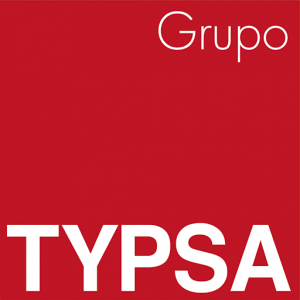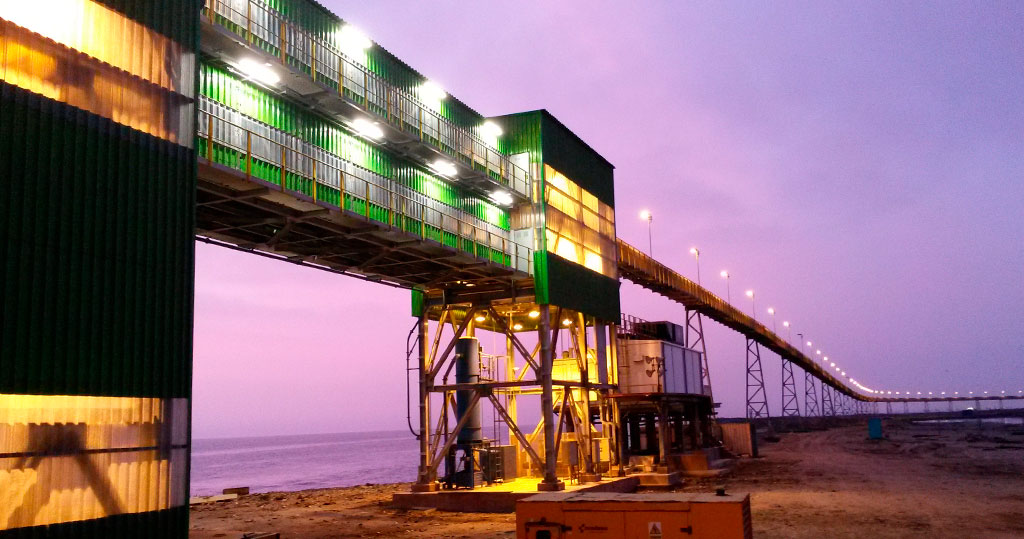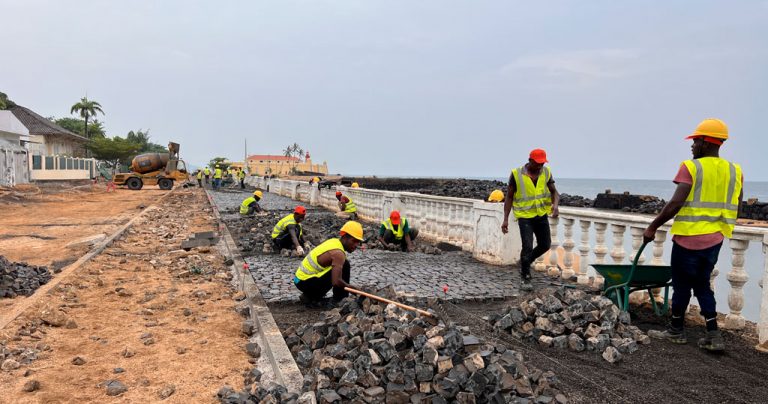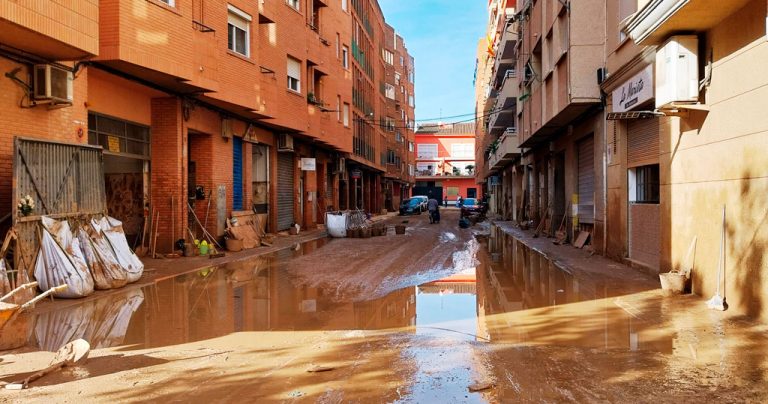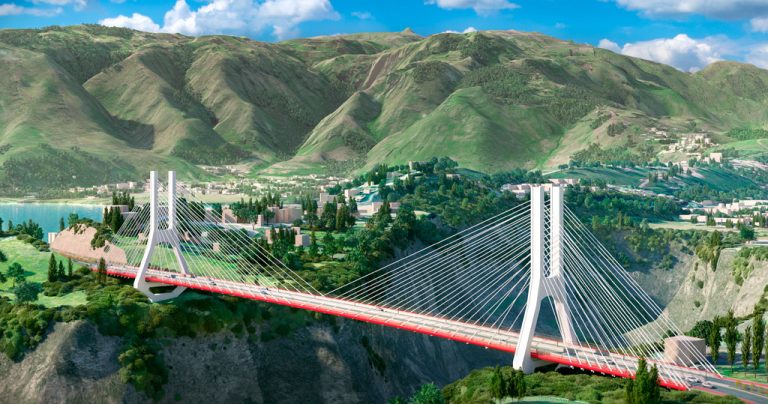TYPSA’s experience in the field of port works dates back to the mid-70s and, since then, its technical teams have been involved in the development and modernization of important port and coastal areas, both in Spain and in the rest of the world.
During these 50 years, the Group’s companies have encompassed all kinds of activities related to the lifespan of port infrastructures and coastal protection. One of the principal points of action is our participation in the development of the port of Callao, in Peru, where TYPSA has been operating continuously for the past 20 years, managing and executing projects that have contributed to the improvement of port infrastructure, the optimisation of logistics and the increase of operational capacity of the port.
The port of Callao, located about 15 km from the city of Lima, is the most important in Peru and the South American Pacific west coast, as well as one of the most important in Latin America with an annual movement of 2.5 million TEU (units equivalent to 20 feet), and is managed by the National Port Authority (APN) of the Peruvian government.
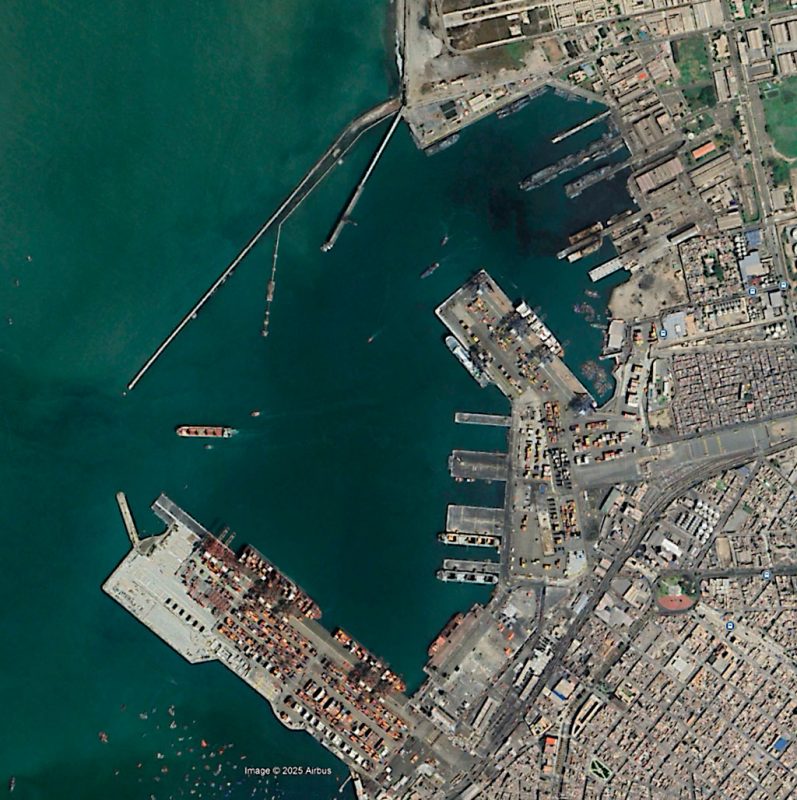
The drafting of Peru’s National Port Development Plan, in 2004, was TYPSA’s first contribution to the expansion of this important infrastructure
TYPSA’s activity in the port of Callao began in 2004, with the drafting of Peru´s National Port Development Plan, in which the port played a major role being the largest in the country. In 2006, we carried out the preliminary design for the tender for the concession of the New Container Terminal-South Zone, commissioned by Dragados SPL, which included a 700 m long dock, extendable to 1,050 m, a 14.5 ha container storage area, the dredging of the access channel and maneuvering dock, the buildings for the administration of the terminal, and the facilities for its operation.
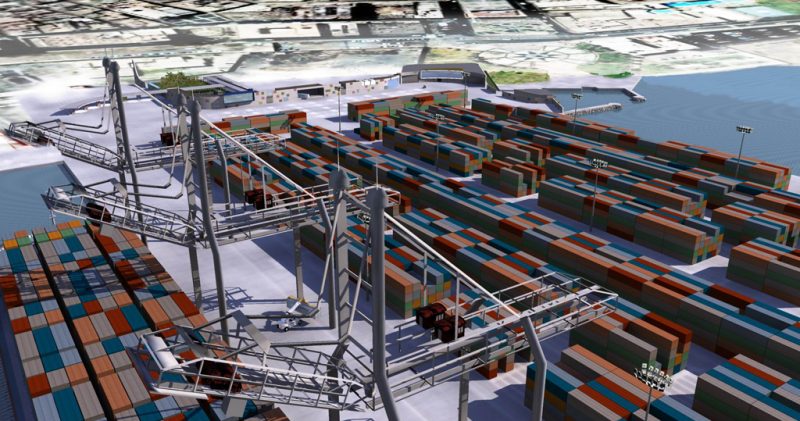
Drafting of different designs and improvement studies for the growing increase in traffic
In 2008, the APN commissioned TYPSA to prepare the feasibility study and preliminary design for the Improvement and/or Expansion of the Entrance of the port terminal, to accommodate the growing increase in traffic due to both the greater number of arrivals of container ships and the increase in their capacity, as well as to enable the operation of Panamax and post-Panamax ships (300 m in length).
In this first stage, the preliminary design was drafted, which would serve to inform the various key players and initiate environmental procedures. It included, among others, topography, bathymetry and geotechnical prospecting activities, maritime climate and wave propagation studies, hydrodynamic and morphodynamic studies, real-time simulator ship maneuvering studies and environmental impact studies, as well as supply-demand studies and port expansion planning, which served as a reference for years in port improvement and expansion projects undertaken by the APN.
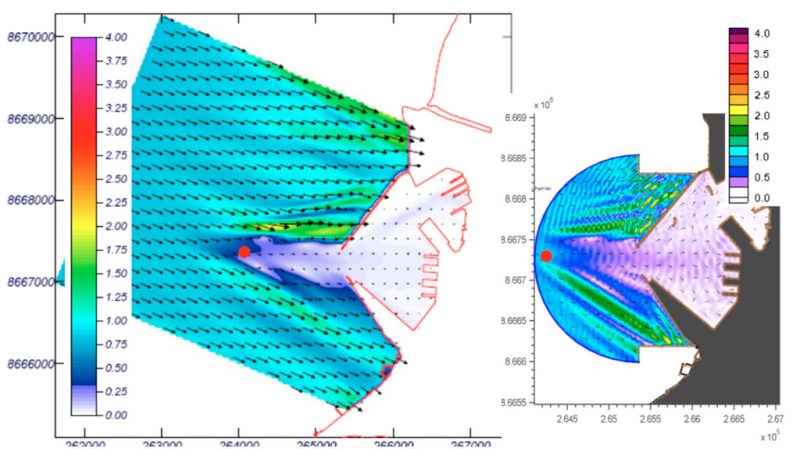
In 2009, after the approval of the preliminary design, in 2009, TYPSA undertook the Definitive Study and Technical File of the project to improve and expand the mouth of the port terminal, with the definition of first-stage dredging, at the level -14.00 m of the access channel and 200 m wide turning area for 300 m long ships, and the second stage, at the level -16.00 m of the access channel and turning area. The total dredging volume reached 4 million m³.
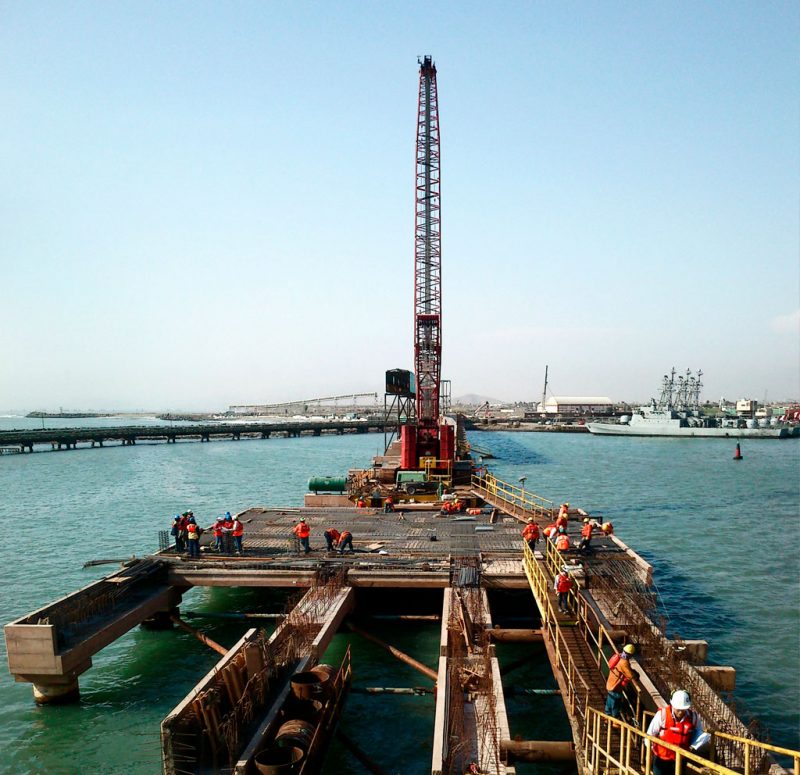
The opening of the entrance was widened to 200 m, cutting through the north dike. To avoid instabilities of the dam’s nose due to dredging, steel piles driven up and cut at the foot of the breakwater slope were used as protection. The two-phase definition of a lighthouse was also carried out, corresponding to the stages of dredging. In the first phase, two new pairs of buoys with lights were installed along with additional buoys pointing to the end of a section of the submerged breakwater. In the second phase, two new buoys were added to the channel.
Construction supervision at different terminals
In 2012, the Supervisory Body for Investment in Public Transport Infrastructure (OSITRAN) commissioned TYPSA to oversee the works of the Mineral Concentrate Shipping Terminal, designed to serve bulk carriers with a conveyor belt system to eliminate dust emissions into the atmosphere and the sea, improving the operation and environmental conditions of the port.
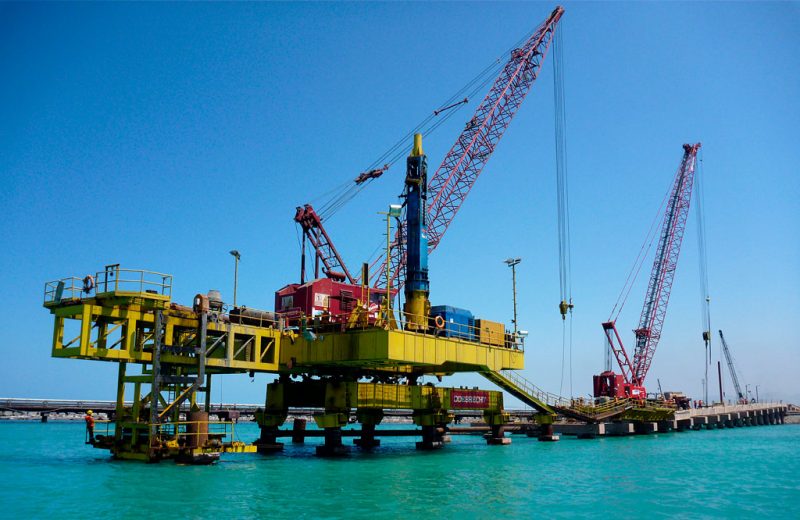
TYPSA supervised the works carried out by the concessionaire, which included the construction of a 200 m long dock parallel to the north breakwater; the construction of the structure to receive the tubular conveyor system over a length of 3 km, the additional dredging to -14 m in the berthing and manoeuvring area, with a dredging volume of 2 million m³; and the manufacture, transport, assembly and commissioning of conveyor belts, hermetic equipment for mineral ore concentrate and linear shiploader , as well as the construction of several buildings.
Between 2018 and 2021, OSITRAN also commissioned TYPSA to supervise the rehabilitation works of Pier No. 7 in the North Terminal, intended for the reception of hydrocarbons. The dock consists of an unloading platform, 5 berthing dolphins, an energy platform and an 815 m walkway that connects to land, and was in a precarious state and which needed to be rehabilitated to extend its lifespan by 25 years and to service ships of up to 50,000 tons.
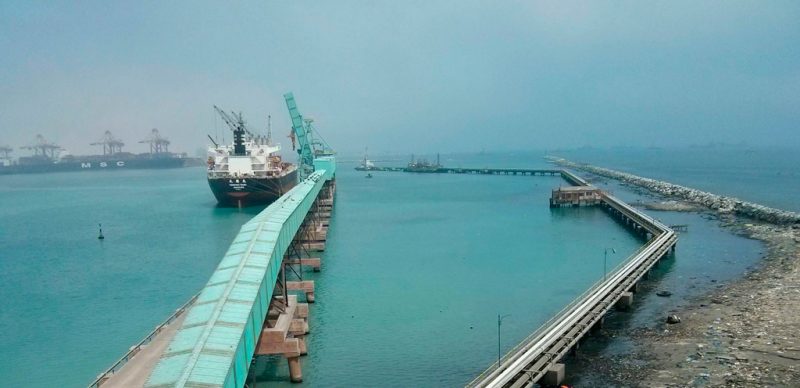
This has required the repair of 396 piles, 220 by encapsulation and 176 by coating with carbon fibre, the repair of the concrete superstructure, the installation of new fire systems and other electrical systems, the improvement of berthing and mooring systems, the supply of drinking water, the repair or reconstruction of buildings, and the replacement or repair of railings and other safety elements. TYPSA’s work has covered the planning phases of the work, the design, the construction and the commissioning of the restored dock.
TYPSA is proud to contribute to the growth of this infrastructure, adapting to its new needs
Since 2024, TYPSA has been overseeing the execution of the Addendum No. 1: Stage 3A of the Multipurpose North Terminal, consisting of the execution of 12 vertical silos for clean grains of 5,000 tons with their operating systems, the installation of 2 continuous grain unloaders (CSU), the construction and paving of 2.13 ha of backup yard for full containers and the construction of access for rolling cargo at the entrance to Gate 3 of the North Terminal. The completion of these works is scheduled for the year 2026.
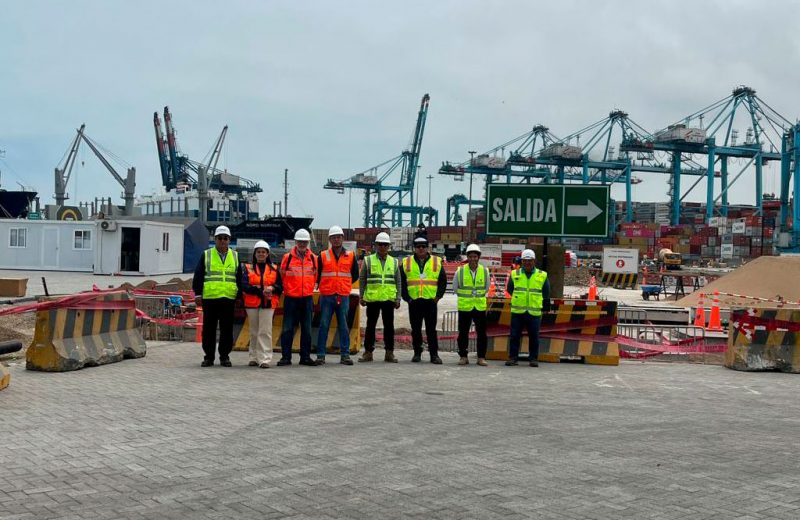
The port of Callao has become the main hub in the South American Pacific
The port of Callao has become the main hub in the South American Pacific with a steady growth curve, especially in terms of container traffic, but also in solid and liquid bulk, vehicles, etc. The main concessionaires regularly undertake expansion works in order to improve their productivity ratios, which also gives rise to the need to invest in land access to the port. All of this results in significant investment dynamism throughout the Lima-Callao region.
Furthermore, there are plans to relocate the existing naval base in the north of the port, which will free up large areas allowing growth of various types of traffic and attracting new concessionaires. All of this presents a very promising future in which TYPSA will surely have an active participation, both in the preparation of studies and technical designs, as well as in the drafting of files and in work supervision.
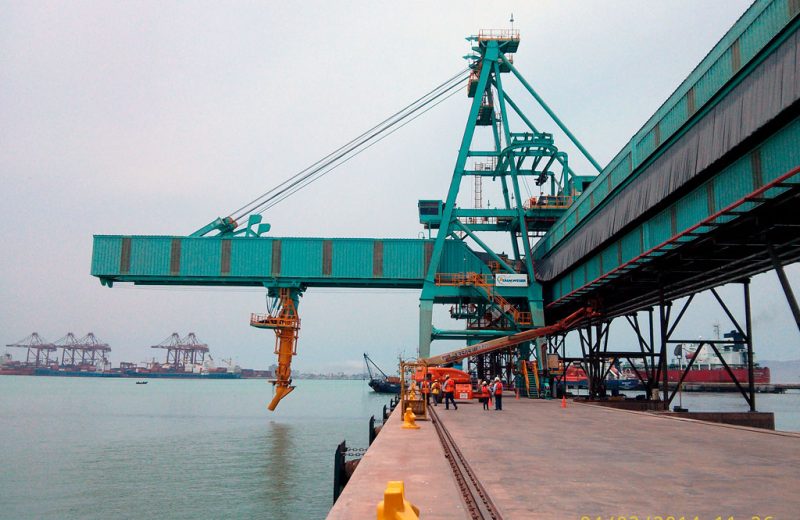
TYPSA’s experience in port activities has been greatly enriched with over 20 years of activity in the Port of Callao
TYPSA has benefited greatly from its experience in the port of Callao, having designed and supervised a wide variety of works, both civil – docks, breakwaters, access channels, dolphins, etc. – as well as mechanical and electrical equipment, conveyor – belts, transfer towers, control buildings, etc. – All of this has led to our expansion in this area, in other countries in the region and around the world.

